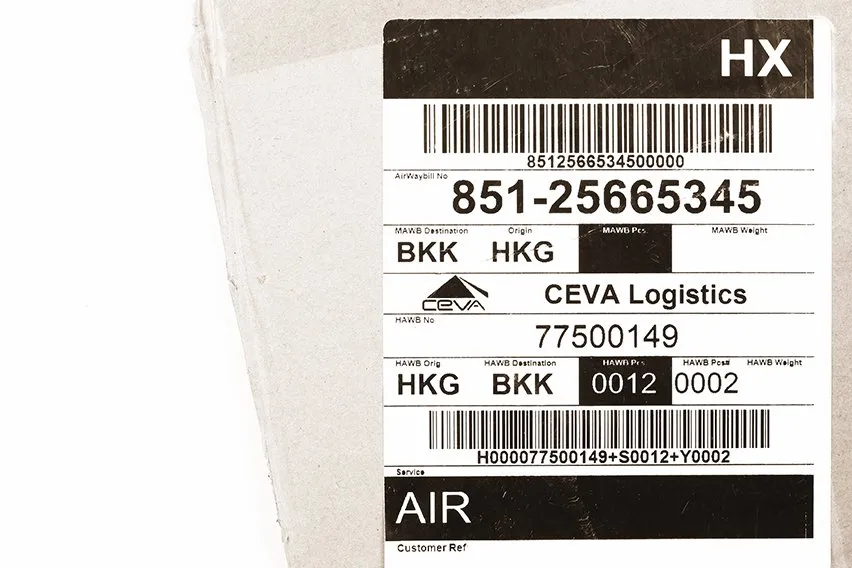SKU vs UPC Code: What’s the Difference?

Have you seen SKU and UPC codes before and weren’t sure what the difference was? They both serve a purpose!
The technology used for scanning products has drastically evolved over the years. And with good reason. Having an efficient system for organizing inventory tracking is a crucial element to your business.
One of the main parts of organizing your system is using SKU and UPC codes. Some often think of them as one and the same, but they serve different purposes.
Here is everything you need to know when it comes to SKU vs UPC codes and how to use them!
Here’s What We’ll Cover:
Which Should You Use? SKU vs UPC
What Is a SKU Code?
A stock keeping unit (SKU) is a unique code that gets applied to individual products in your inventory. Even if you sell the same product as someone else, their SKU codes will still be different from yours.
SKUs are generated using alphanumeric digits. They can get used for physical products as well as other intangible products that you are still able to bill for. Those products can include things like warranties or repairs.
It’s important to recognize that SKU codes are completely different compared to product numbers. Product numbers are generally created by the manufacturer that makes the product. Where SKUs help locate and organize your inventory.
SKU numbers can vary a little bit depending on your business since you assign your own set of numbers. The alphanumeric codes are usually under 12-digits and use a combination of letters and numbers.

Tips for SKU Best Practices
You want your SKU codes to be easy to read. You can include product details like color, size, purchase date, style, cost and condition. Consider what the main purpose of your SKU is and go from there. Do you want to organize product features based on an individual product model? Or do you want to use unique product identifiers to organize your product catalog?
Here are a few other tips for creating your own SKU codes as a business owner.
- Keep them simple enough to be understood by anyone reading them
- Don’t just use letters or numbers, use a combination of both
- Don’t use the same product or serial number that the manufacturer used
- Keep each SKU code unique to products, don’t reuse codes for the same type of product
- Try and begin the code with a letter
- Try and keep codes anywhere from 8 to 12 alphanumeric characters long
What Is a UPC Code?
UPC stands for universal product code. SKU codes are to identify different internal products in your inventory and some of their characteristics. UPC codes are to identify a product for its entire shelf life even if multiple different retailers are selling the same product. UPC codes remain the same no matter where the product is.
UPC codes consist of 12 numeric digits. Think about when you last purchased something and it got scanned by the cashier. The code that gets scanned is the UPC code.
Since you can use SKU codes to track your own unique product inventory, you can use UPC codes to find a product across multiple retailers. This is since the individual products’ numeric code will be the same.
The 12-digit number you see on an item description is created and managed by GS1 (Global Standards 1) US. It’s an American branch of the international organization GS1. They help to maintain global standards for communication in business, which improves efficiency.
One of the biggest distinctions between a SKU and a UPC code is that you must purchase UPC codes. This is to help make sure that there are no duplicate numbers issued. You can contact GS1 to make sure you meet the necessary compliance requirements. They can also help with information regarding whether or not the UPC code can get used or if you need to make any changes.
Which Should You Use? SKU vs UPC
They are two distinct codes, but you can use a UPC code as a SKU code if you wanted to. UPC codes can seem like an easier route since they are a universal number and already come with the product. That said, there are some major benefits to using SKU codes and having a separation between them and UPC codes.
You can tailor your unique SKU codes to exactly what your business offers. They allow for the ability to customize the way you track the products in your inventory. And if you have multiple types of retail products, SKU codes will make them easier to scan and organize.
They also contribute to overall efficiency. It might not seem like much, but they make it easier to purchase a product since it’s faster to checkout. Employees can quickly scan or input the SKU number and have you on your way. If you’re selling tons of products, the easier you can find and track those products the better.

Key Takeaways
You should have a good sense as to the differences between a SKU vs UPC code and why each is important. But for even more clarification, they can be defined in a simpler way:
You can create your own SKU numbers any way you want for the inventory you have, and they are meant for internal identification.
UPC codes are product identifiers and need to be purchased and fully licensed to be usable.
How you decide to use SKU and UPC codes depends on your business needs. Retailers might benefit most from SKUs since product inventory is a crucial element of their business. Whereas wholesales might benefit most from UPC codes to track their products across more than one business.
Maybe you’re testing out using new types of barcode scanners or you are updating your entire inventory management system. Or maybe you’re just changing the units of products and their barcode placement. Whatever it is, you now have the right information when it comes to SKU vs UPC codes to create more reliable inventory management for your business.
Are you interested in more guides like this one? Head over to our resource hub for more great content.
RELATED ARTICLES

 What Is Slotting? Definition, Best Practices & Benefits
What Is Slotting? Definition, Best Practices & Benefits Can a Business Owner File for Unemployment?
Can a Business Owner File for Unemployment? What Is Business Process Outsourcing (BPO)?
What Is Business Process Outsourcing (BPO)? What Are Business Insights?
What Are Business Insights? Discrete Manufacturing vs. Process Manufacturing – What’s the Difference?
Discrete Manufacturing vs. Process Manufacturing – What’s the Difference? How to Close a Business: A Step by Step Guide
How to Close a Business: A Step by Step Guide